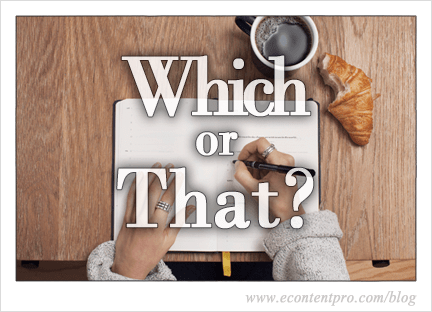
When to use which or that is one of the most common mistakes made in writing. In this post, we will look at why this mistake is so commonly made and how you can remember which word you should use in your sentence.
When to Use Which
You will want to use which when your sentence contains a nonrestrictive clause, or a clause that can be left out of your sentence without changing your intended meaning. This clause simply contains additional information to add to your sentence. We will look at an example of this below.
Example of How to Use Which Correctly
My car, which is in the garage, is a new car.
You can see that if we were to remove the highlighted phrase in the sentence above, our sentence would still make sense. We could say, “My car is a new car,” and our sentence would still make sense, but you wouldn’t know that the car is in the garage.
It is important to note that nonrestrictive phrases are usually surrounded by commas. If a nonrestrictive clause comes at the end of the sentence, you will want to be sure to include a comma before beginning the clause.
When to Use That
You will want to use that when your sentence contains a restrictive clause, which is a clause that cannot be removed from your sentence without changing your intended meaning. We will look at an example of a restrictive phrase below.
Example of How to Use That Correctly
Our car that uses hybrid technology has excellent safety ratings.
In this example, it would change the meaning of the sentence if we removed the highlighted phrase, because not all cars have excellent safety ratings. Also, please note that our restrictive phrase is not set off by commas, as restrictive clauses do not require commas.
How to Test That You Have Used Which and That Correctly
You can test that you have used these words correctly by evaluating your sentence. If your sentence will still make sense and have the same meaning if you remove the clause that begins with which, you have used the correct word. On the other hand, if removing the clause in question would change the entire meaning of your sentence, you will need to use the word that.
If you are still unsure of yourself, let eContent Pro help you.
Based in Hershey, Pennsylvania, USA, eContent Pro offers high-quality end-to-end editorial and publishing services, ensuring seamless workflows through the eContent Pro Business Enterprise Management System (BEMS), fast turnaround times, competitive pricing, and exceptional customer service. Since 1994, we have supported commercial publishers, university/library presses, organizations, and societies by streamlining their publishing workflow with innovative publishing solutions.

